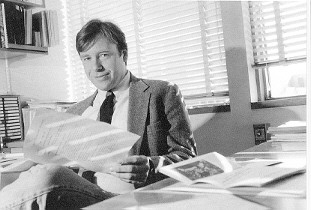
MIT Energy Laboratory
 |
Current Research:
ELECTRIC POWER
MIT Energy Laboratory |
The electric power industry is now undergoing vast changes brought on by regulatory efforts--both economic and environmental--and by increased global competition. Electric Power research at the Energy Laboratory has become increasingly diverse as MIT faculty and staff develop new approaches to equipment design and integration to meet the challenges of a more competitive industry. Traditionally, research in electric power has focused on developing technologies and control methodologies that fit the industry's centralized structure. But such a vertically integrated structure is a thing of the past, and MIT researchers are leading the way in developing new technologies and control structures that will allow companies to flourish in the new emerging markets.
The Laboratory's traditional electric sector research continues to focus on improving power system components such as generation, transmission, and distribution. Ongoing research on power systems centers on optimum power flow and stability, while research on generation focuses on optimizing the role played by generation in the current system. Work in these areas is discussed under
Combustion and Fuels and Nuclear Safety and Technology.Investigators in the Laboratory for Electromagnetic and Electronic Systems (LEES) pursue research aimed at optimizing the performance of transmission and distribution systems and components. With the competitive forces now at work in the industry, the LEES research has taken a new dynamic track that seeks to integrate real-time operation and economics as electric industries worldwide change the rules by which power systems operate.
LEES work on power systems includes the development of sophisticated equipment-monitoring methods that will improve equipment performance, reduce maintenance costs, and maximize the equipment's contribution to the performance of the total power system. This work is complemented by LEES research in hierarchical power system control and operation, which allows owners of resources to maximize their component's value in the emerging competitive long-term, short-term, and spot energy markets as well as in the rapidly evolving market for system services. The development of distributed generation and operational control structures is one beneficial offshoot of recent LEES initiatives.
The Energy Laboratory's Analysis Group for Regional Electricity Alternatives (AGREA) performs strategic assessments of diverse resource strategies for the electric sector. The analyses are based on the use of realistic multi-attribute simulation models of regional electric power systems to examine the effects that different technologies and competitive structures have on total system performance, cost, and emissions as well as on future technology choice and development. The research is conducted with a strong emphasis on public participation and education, achieved through continuing interaction with AGREA's advisory group of New England utility representatives, utility and environmental regulators, and consumer and environmental interest groups. The work is designed to help knowledgeable groups of stakeholders come to consensus on future strategies that can meet multiple goals.
Recent efforts by AGREA have focused on identifying the cost and emissions performance of integrated resource portfolios under uncertainty. Topics of interest include the emissions effectiveness of electric vehicle fleets and other electrotechnologies in New England and the performance of nitrogen-oxides-control technologies retrofitted on existing power generation in conjunction with seasonal and geographical emissions constraints. AGREA is continuing to examine issues concerning fuel and resource diversity as well as environmental compliance and risk mitigation in a competitive market. The group is also evaluating the contributions that renewable energy sources and electricity conservation can make as cost-effective options for reducing carbon dioxide.
AGREA's technical evaluations of market-based environmental regulation are performed in cooperation with the Center for Energy and Environmental Policy Research. AGREA researchers also work with Sloan School of Management investigators in examining resource planning and acquisition practices for companies in a competitive industry.

Selected Participants
At a series of topical workshops each year, representatives from member companies learn about and discuss the next generation of technological innovations, their foundations in basic research, and their relevance to a rapidly changing and competitive industry. In the past several years workshops have focused on research and development that will help the member utilities compete in the new electric industry environment.
Overall, the EUP provides a forum for industrial and academic experts to consider advances in science and technology and their application to the electric sector and to discuss the latest economic, environmental, and regulatory issues so that solutions--both technological and non-technological--can be developed and communicated to industry and government.
 the Energy
Laboratory Home Page.
the Energy
Laboratory Home Page.